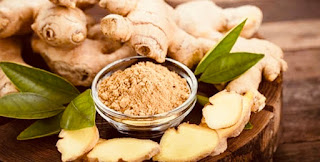HOW TO TREAT PNEUMONİA AT HOME HOW TO 🤔
Pneumonia, which occurs as a result of inflammation in the lungs, carries the risk of death if measures are not taken. So what is pneumonia? What are the methods of preventing pneumonia? How is pneumonia treated?
What is Pneumonia?
Pneumonia is known as pneumonia; In short, it is an inflammation of the lung tissue. It occurs due to various microorganisms, especially bacteria. In some types of pneumonia, there is a direct risk of transmission from sick person to healthy people. But the disease mostly occurs when microbes in the patient's own mouth, throat or digestive tract reach the lungs. These microbes, which do not normally cause disease, cause pneumonia in people with weakened body defenses. Therefore, risk factors that break the body resistance of the person rather than contamination play a role in the formation of pneumonia.
What are the causes of pneumonia?
Since pneumonia is a direct bacterial disease, almost anything the body can catch can cause the disease. Inflammation is caused by microorganisms such as viruses, bacteria or fungi. Over thirty microorganisms that cause pneumonia are known. Close contact with someone with the disease is one of the most important factors. Pneumonia is an infectious disease. Contaminated bacteria settle in and around the upper respiratory tract and multiply rapidly. Crowded and closed areas prepare the ground for pneumonia. Apart from these, other factors that cause pneumonia formation are; Advanced age, excessive smoking, chronic diseases, alcohol use, pot disease, use of immunosuppressive drugs and chemotherapy make it easy to catch pneumonia.
What are the symptoms of pneumonia?
Pneumonia patients have problems such as fever up to 39-40 degrees, dark sputum, chills, cough and fatigue. As a result of the inflammation of the lung, the defense mechanism produces phlegm to keep the airways open. The symptoms of pneumonia can actually vary depending on the type of pneumonia. Some types of pneumonia may have insidious symptoms, the most common symptoms of pneumonia;
Shivering and decreased appetite
Making yellow or green sputum
Dark reddish consistency phlegm that is rust-colored
Chest pain, Sore throat, Bone pain
Dry and wheezing cough
Pain sensation as if a nail is being stuck in the back when inhaled
Severe headache, dizziness, fainting
Fever after a severe chills
Loss of consciousness, distraction, perception disorders
Fatigue, weakness
Pain in the breast area in the front and at the tip of the shoulder blade in the back
Chest pain aggravated by respiratory movements and cough
Cold sores on the lips
Excessive thirst, rapid breathing
Face swelling, Dry and white tongue
Blue lips
Urine whose amount is reduced and leaves a light-colored residue when kept
Coma
What are the types of pneumonia?
Bacterial pneumonia: This type of pneumonia is caused by various bacteria. The most common of this type of pneumonia is the bacteria called Streptococcus pneumoniae. The cycle of the illness occurs when old age, malnutrition or a weakened immune system. Such situations are situations that allow pneumonia bacteria to reproduce. Bacterial pneumonia can affect people of all ages. Bacterial pneumonia is also divided into types and varieties.
Legionnaires' disease: Usually, this type of pneumonia bacterium grows in water. This bacterium, which takes its place in ventilation systems in large buildings, can also be seen in smokers.
Pneumococcal pneumonia: It is a type of bacterial pneumonia. On average, three of every bacterial pneumonia is pneumonia composed of this bacteria.
Aspiration pneumonia: It is a type of pneumonia that you can catch due to accidental swallowing during pool water, sputum or vomiting. In this way, microbes settle in the liver and cause the disease. This type of pneumonia is usually experienced in diseases caused by swallowing difficulties.
Viral pneumonia: A type of virus pneumonia. This type is pneumonia caused by flu viruses and various viruses. This virus is responsible for a third of all pneumonia problems. The first symptoms of viral pneumonia are the same as for bacterial pneumonia. Symptoms include worsening cough, increased shortness of breath.
Mycoplasma pneumonia: This type of pneumonia has different physical symptoms and normal symptoms from other types. The disease is called atypical agent in medical language. Generally, this type of pneumonia affects all age groups. It causes mild and widespread pneumonia. The symptoms it presents is a severe cough that causes mucus to be produced.
How should we be protected from pneumonia?
The most important thing to do to prevent pneumonia is to keep the body resistance strong. This can be achieved by avoiding smoking and alcohol, eating a healthy and balanced diet and sleeping regularly. Appropriate monitoring and treatment of chronic diseases, avoiding stress, ensuring hygienic accommodation conditions, controlling drug addiction, and reducing risk factors that cause mouth and stomach contents to escape into the respiratory tract must be reduced.
It is necessary to have a flu vaccine in order to be protected in the winter months when microbes frequently surround our body. Because the flu can turn into pneumonia or prepare the ground for the formation of the disease. When bacterial pneumonia is added to the flu, even fatal pictures can occur.
How is pneumonia treated?
Pneumonia can usually be treated at home. Severe cases, elderly patients, patients requiring oxygen therapy or intensive care support should be hospitalized. Treatment depends on the patient. The results are satisfactory when treatment is started early and in cases that can be treated as an outpatient. The disease can be treated with the use of antibiotics and expectorants. In addition, pain relievers may be recommended to relieve the patient. Depending on the condition of the disease, drugs can also be administered as injection. In external treatments, the patient is called for control again 3 days later and general controls are made again.
Diagnosis and treatment of severe pneumonia
Thyme cure;
A teaspoon of wild thyme is thrown into a boiling glass of hot water, infused for 5 minutes and then drained. It is drunk two hours after meals in the morning and evening. This sphere can be continued for 1 month. It should be prepared fresh.
Black pepper;
It is thrown into a boiling glass of hot water. It is infused for 7 minutes so that the bottom is very low. It is drunk two hours after meals in the morning and evening. It is continued for 10 days. Take a week break and continue for 10 days.
Chestnut honey;
Chestnut honey can be eaten as much as one dessert spoon a day.
FIG;
5 pieces of crushed figs are soaked in hot water and drunk.
Evening primrose;
It is made and drunk in syrup. There is also ready-made syrup in herbalists.
Celandine;
The syrup of the fresh root is drunk. It needs attention. If consumed too much, it poisons the person.
Olive oil;
A tablespoon of olive oil is drunk every 4 hours during the day.
Thyme cure;
A teaspoon of wild thyme is thrown into a boiling glass of hot water, infused for 5 minutes and then drained. It is drunk two hours after meals in the morning and evening. This sphere can be continued for 1 month. It should be prepared fresh.
Black pepper;
It is thrown into a boiling glass of hot water. It is infused for 7 minutes so that the bottom is very low. It is drunk two hours after meals in the morning and evening. It is continued for 10 days. Take a week break and continue for 10 days.
Chestnut honey;
Chestnut honey can be eaten as much as one dessert spoon a day.
5 pieces of crushed figs are soaked in hot water and drunk.
Evening primrose;
It is made and drunk in syrup. There is also ready-made syrup in herbalists.
Celandine;
The syrup of the fresh root is drunk. It needs attention. If consumed too much, it poisons the person.
Olive oil;
A tablespoon of olive oil is drunk every 4 hours during the day.
Thyme cure;
A teaspoon of wild thyme is thrown into a boiling glass of hot water, infused for 5 minutes and then drained. It is drunk two hours after meals in the morning and evening. This sphere can be continued for 1 month. It should be prepared fresh.
Black pepper;
It is thrown into a boiling glass of hot water. It is infused for 7 minutes so that the bottom is very low. It is drunk two hours after meals in the morning and evening. It is continued for 10 days. Take a week break and continue for 10 days.
Chestnut honey;
Chestnut honey can be eaten as much as one dessert spoon a day.
FIG;
5 pieces of crushed figs are soaked in hot water and drunk.
Evening primrose;
It is made and drunk in syrup. There is also ready-made syrup in herbalists.
Celandine;
The syrup of the fresh root is drunk. It needs attention. If consumed too much, it poisons the person.
Olive oil;
A tablespoon of olive oil is drunk every 4 hours.
Lemon;
It is drunk by adding honey into the freshly squeezed lemon juice.
Laughter flower;
Blossom, This flower's ointment is applied to the chest and neck.
Cinnamon;
Cinnamon oil known as Chinese cinnamon is applied.
Garlic;
It is a miraculous food that fights viruses, fungi and bacteria and contains antimicrobial properties. It also shows expectorant properties and keeps the body temperature in balance. Thanks to its expectorant feature, it helps in cleansing the lungs. Pour a glass of milk into 4 glasses of water and mix. Add half a teaspoon of crushed garlic into it. Boil this mixture and drink it twice a day, after allowing it to warm.
Turmeric;
Turmeric powder has anti-bacterial, anti-inflammatory, anti-oxidative and anti-septic. Stir in the hot mustard oil until the turmeric powder forms a paste. Massage the chest with this mixture by rubbing it. Also, add a glass of hot milk, a teaspoon of turmeric powder and mix well. Drink this mixture 2-3 times a day. It is added and mixed. Another alternative is to mix half a teaspoon of turmeric powder with a quarter teaspoon of black pepper in a glass of hot water. Drink this once a day.•••











Comments
Post a Comment